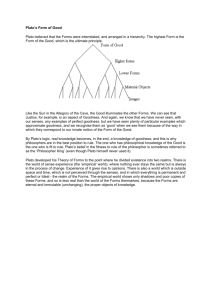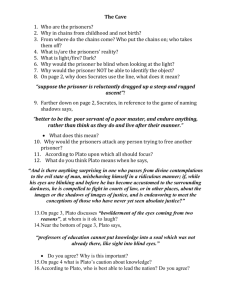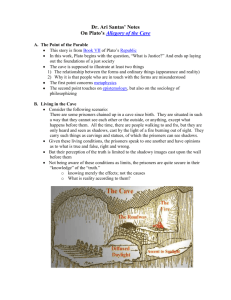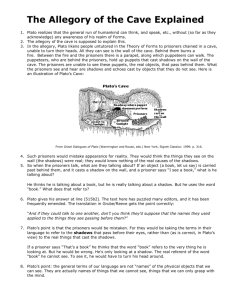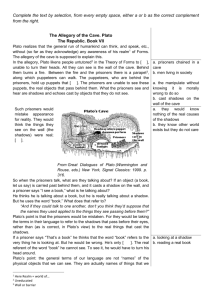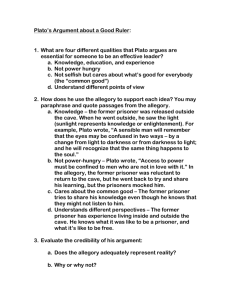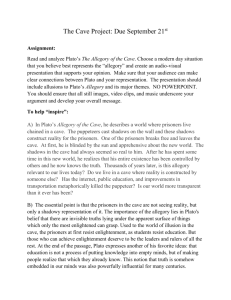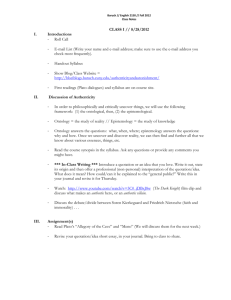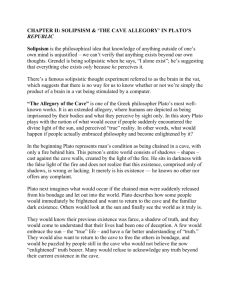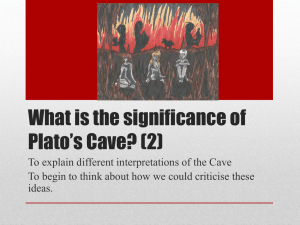What does it all mean?
advertisement
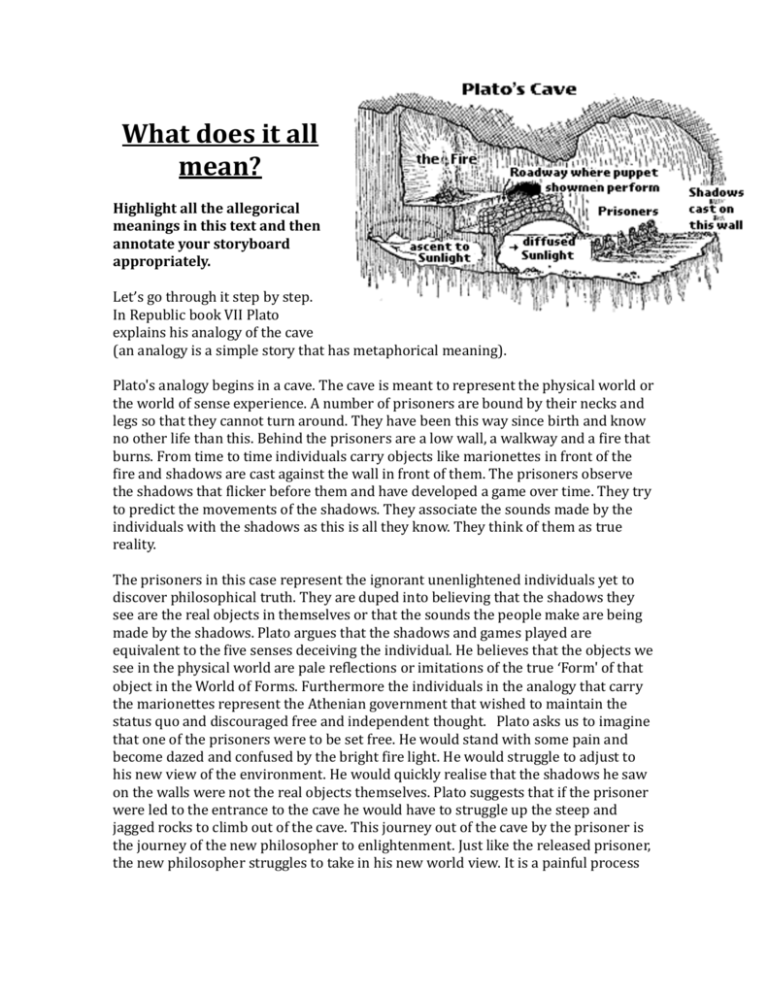
What does it all mean? Highlight all the allegorical meanings in this text and then annotate your storyboard appropriately. Let’s go through it step by step. In Republic book VII Plato explains his analogy of the cave (an analogy is a simple story that has metaphorical meaning). Plato's analogy begins in a cave. The cave is meant to represent the physical world or the world of sense experience. A number of prisoners are bound by their necks and legs so that they cannot turn around. They have been this way since birth and know no other life than this. Behind the prisoners are a low wall, a walkway and a fire that burns. From time to time individuals carry objects like marionettes in front of the fire and shadows are cast against the wall in front of them. The prisoners observe the shadows that flicker before them and have developed a game over time. They try to predict the movements of the shadows. They associate the sounds made by the individuals with the shadows as this is all they know. They think of them as true reality. The prisoners in this case represent the ignorant unenlightened individuals yet to discover philosophical truth. They are duped into believing that the shadows they see are the real objects in themselves or that the sounds the people make are being made by the shadows. Plato argues that the shadows and games played are equivalent to the five senses deceiving the individual. He believes that the objects we see in the physical world are pale reflections or imitations of the true ‘Form' of that object in the World of Forms. Furthermore the individuals in the analogy that carry the marionettes represent the Athenian government that wished to maintain the status quo and discouraged free and independent thought. Plato asks us to imagine that one of the prisoners were to be set free. He would stand with some pain and become dazed and confused by the bright fire light. He would struggle to adjust to his new view of the environment. He would quickly realise that the shadows he saw on the walls were not the real objects themselves. Plato suggests that if the prisoner were led to the entrance to the cave he would have to struggle up the steep and jagged rocks to climb out of the cave. This journey out of the cave by the prisoner is the journey of the new philosopher to enlightenment. Just like the released prisoner, the new philosopher struggles to take in his new world view. It is a painful process thinking in new ways. This is clearly represented in the ascent out of the cave up the steep and jagged rock path. Once outside the prisoner would further struggle to understand the new world that was around him. At first he would simply focus on the shadows that objects cast in the sun. But given time he would be able to see objects as they really are, in full shape and colour. - the World of the Forms (which we will be looking at later this week, so don’t worry too much if this bit is hard!) . It is the sun that provides the true shape and colour in the analogy and so the sun represents the Form of the Good (FoG). Plato is stating that the FoG gives all of the other Forms their shapes. This is the goal of every philosopher; to gain intimate knowledge of the FoG and realise that the physical world (or the cave) is not true reality. It should also be noted that the fire in the cave is a superficial sun. The fire that burns only gets its energy from wood which comes Plato believes that true knowledge can only be found in the WoFs. This means that any knowledge that comes through the five senses cannot be true as the physical world is in a state of constant change and flux. Only through developing the skill of reason can the philosopher hope to understand the nature of reality. Plato believes that the soul has been caught in the body and that the only escape is to become like the philosopher and discover true reality. He believes that the soul exists in the WoFs and has always done so. This is why he places such an emphasis on reason. The mind is the key. Through the mind we can reason back to our souls to remember the nature of things. Once the philosopher is enlightened Plato suggests that they will return to the cave to tell others of their enlightenment. He suggests that if the philosopher were to try to tell the others in the cave that there was a whole other world outside the cave they would laugh at them. If they persisted to try and convince them that this was the case then the prisoners would be prepared to kill them. Here Plato is making the point that the unenlightened are prepared to believe the established order (in Plato's time the Athenian government) rather than think for themselves. This is a reference to the death of his teacher Socrates.

